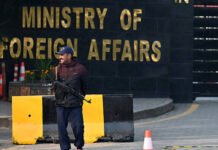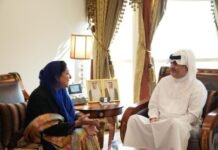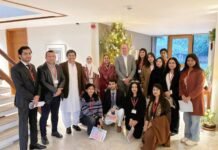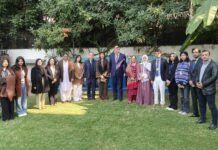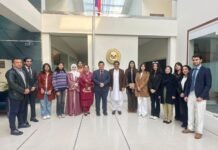South Africa’s location is in Southern Africa, at the southern tip of the continent of Africa. The country shares borders with Botswana 1,969 km; Lesotho 1,106 km; Mozambique 496 km; Namibia 1,005 km; Eswatini 438 km; Zimbabwe 230 km.
The country has semiarid weather; subtropical along with the east coast climate; sunny days, and also cool nights. South Africa has a wide range of natural resources; among which we can find gold, chromium, antimony, coal, iron ore, manganese, and also nickel.

Other natural resources found in South Africa are phosphates, tin, rare earth elements, uranium, gem diamonds, platinum, copper, vanadium, salt, and natural gas. The country has two large rivers, which are the orange; shared with Lesotho and Namibia, and also the Limpopo river source; shared with Botswana, Zimbabwe, and Mozambique.
South Africa has two major aquifers which are Karoo Basin, and also Lower Kalahari-Stampriet Basin.
POPULATION
The population is concentrated along the southern and southeastern coast, and also inland around Pretoria. Furthermore, the estimations made during the first months of 2022, stated that the country had 57,516,665 citizens.
In the ethnic groups, South Africa’s population is largely Black African with 80.9%; and the rest are colored (persons of mixed race ancestry) 8.8%, white 7.8%, and also Indian/Asian 2.5%.

Moreover, the country counts with the presence of several languages. Those languages are isiZulu (official) 25.3%, isiXhosa (official) 14.8%, Afrikaans (official) 12.2%, Sepedi (official) 10.1%, Setswana (official) 9.1%, English (official) 8.1%, Sesotho (official) 7.9%, Xitsonga (official) 3.6%, siSwati (official) 2.8%, Tshivenda (official) 2.5%, isiNdebele (official) 1.6%, other (includes Khoi, Nama, and San).
86% of the population practices the Christian religion. The rest of the population practices ancestral, tribal, animist, or other traditional African religions 5.4%, Muslim 1.9%, other 1.5%, nothing in particular 5.2%.
DEMOGRAPHIC PROFILE
The South African youth is rapidly aging; at the same time that the fertility rate decreased from 6 children per woman to 2.2. This sets apart the country from the rest of Sub-Saharan Africa, where the average TFR remains higher than in other regions of the world.

The reason for the decreasing number of children is that women increase their educational attainment, workforce participation, and use of family planning methods; to delay marriage, and prefer smaller families.
The life expectancy of the citizens went from less than 43 years in 2008 to 63 years in 2017. 42.37% of the population is between the range of 25and 54 years; 27.94% is between the range of 0 and 14, and the rest are in the other age ranges.
The total median age is 28 years. Currently, the total birth rate is 18.56 births per 1,000 population. Regarding the literacy rate; 95% of the population of age 15 and over can read and write.
FORM OF GOVERNMENT
Moreover, South Africa is a parliamentary republic. The country has three different capitals, Pretoria (administrative capital); Cape Town (legislative capital); and also Bloemfontein (judicial capital).
https://www.youtube.com/watch?v=x6tyxpinONQThe country has 9 provinces; Eastern Cape, Free State, Gauteng, KwaZulu-Natal, Limpopo, Mpumalanga, Northern Cape, North West, and Western Cape. The Union of South Africa was formed from four British colonies: Cape Colony, Natal, Transvaal, and also Orange Free State got independence on 31 May 1910.
The country became formally a republic on 31 May 1961. South Africa has had several constitutions, and the latest was drafted on 8 May 1996, approved by the Constitutional Court on 4 December 1996, and became effective 4 February 1997.
LEGAL AND JUDICIAL SYSTEM AND OTHER ASPECTS

Moreover, South Africa has a mixed legal system of Roman-Dutch civil law, English common law, and customary law. The current chief of state and head of government is President Matamela Cyril Ramaphosa since Jacob Zuma tendered his resignation. They have a Deputy President David Mabuza.
South Africa has bicameral Parliament consisting of the National Council of Provinces (90 seats), and the National Assembly (400 seats). Furthermore, the country has two high courts which are the Supreme Court of Appeals; and also the Constitutional Court.
In the subordinate courts we can find High Courts; Magistrates’ Courts; labor courts; and also land claims courts.
The flag has two equal width horizontal bands of red (top) and blue separated by a central green band that splits into a horizontal Y, the arms of which end at the corners of the hoist side; the Y embraces a black isosceles triangle from which the arms only separated by narrow yellow bands; the red and blue bands are separated from the green band and its arms by narrow white stripes.
The Y was to represent the convergence of diverse elements within South African society, taking the road ahead in unity. The national symbols of the country are springbok (antelope), king protea flower; national colors: red, green, blue, yellow, black, and white.
WORLD HERITAGE SITES
South Africa has 10 World Heritage Sites. Five of them are cultural, four are natural, and one is mixed. Those sites are Fossil Hominid Sites of South Africa (c), iSimangaliso Wetland Park (n), Robben Island (c), Maloti-Drakensberg Park (m), Mapungubwe Cultural Landscape (c), Cape Floral Region Protected Areas (n), Vredefort Dome (n), Richtersveld Cultural and Botanical Landscape (c), Khomani Cultural Landscape (c), and also Barberton Makhonjwa Mountains (n).
ECONOMY
The country is a middle-income emerging market with an abundant supply of natural resources. The economy of the country also has well-developed financial, legal, communications, energy, and transport sectors; and a stock exchange that is Africa’s largest and among the top 20 in the world.
The main challenges of South Africa are unemployment, poverty, and inequality. Official unemployment is roughly 27% of the workforce and runs significantly higher among black youth. Even though the country has the infrastructure, there are unstable electricity supplies that retard growth.
In the GDP in terms of purchasing power parity, South Africa registered a decrease from 2019 to 2020, most likely due to covid-19. In 2019, the GDP was 730.91 billion and in 2020 it decreased to 680.04 billion.
The real GDP growth rate also decreased. In 2019, it was 0.06%. In the agricultural products, South Africa has sugar cane, maize, milk, potatoes, grapes, poultry, oranges, wheat, soybeans, and beef.
Its industries are mining (the world’s largest producer of platinum, gold, chromium), automobile assembly, metalworking, machinery, textiles, iron and steel, chemicals, fertilizer, foodstuffs, and commercial ship repair.
The export partners of South Africa are China at 15%, the United Kingdom at 8%, Germany at 7%, the United States at 6%, and India at 6%. To them, the country exports gold, platinum, cars, iron products, coal, manganese, and diamonds.
On the other side, South Africa’s imports are China at 18%, Germany at 11%, the United States at 6%, and India at 5%. Among the products that the country imports from its partners there are crude petroleum, refined petroleum, cars and vehicle parts, gold, and broadcasting equipment.
CULTURE OVERVIEW AND CUISINE
Furthermore, the culture of South Africa, is a blend of Western technology and indigenous technology, with Western traditions with African and Asian traditions. Patterns of daily life in South Africa are conditioned by social class, ethnicity, religion, and residence.
Furthermore, the mix of cultures generated a wide variety of food choices; from the traditional food of various cultures to the cosmopolitan cuisine. African food has the main ingredient is the vegetables, with corn, often in porridges (mealie pap); A dish made from broken dried corn kernels, sugar beans, butter, onions, potatoes, chiles, and lemon is called umngqusho.
The Portuguese introduced fish dishes, and the Indian influence added spices and samosas. The strongest links to traditional societies have been through the many languages embodying the country’s cultural diversity, whose nuances of language and also sensibility carry over into the arts.
There are traditional art forms such as dancing and textile weaving, and modern art forms from painting to literature. Many popular South African arts represent a fusion of cultural influences, such as township jazz and pop music, religious choral music, and so-called “traditional” dances.
South Africa also has the lifela song-poems composed by Sotho migrant workers to express and comment upon the life of miners. South African music is a fusion of various musical styles such as traditional indigenous music, jazz, Christian religious music, and forms of popular music from the United States.
The country’s pioneer performers are African Jazz Pioneers, Ladysmith Black Mambazo, Miriam Makeba, and Hugh Masekela.
HISTORICAL ART
Rock and cave art attributable to the San, some of which is thought to be about 26,000 years old, has been found across much of Southern Africa. Most of those paintings have been found in the Drakensberg mountains.
Terra-cotta figures dated to AD 500 are known as Lydenburg heads. Furthermore, there have been several excavations at Bambandyanalo and Mapungubwe in the Limpopo River valley have found gold animal statues as well as a wealth of pottery and clay animal figurines.
The literature was an expression of resistance during the apartheid. One of its best-known works is Alan Paton’s novel Cry, the Beloved Country (1948), which drew world attention to the separatist system. 20 years later, South Africa had the Sestigers as contributors to resistance.
South Africa’s various Black cultures have rich oral traditions, including narrative, poetic, historical, and epic forms. Oliver Kgadime Matsepe (North Sotho), Thomas Mofolo (South Sotho), Guybon Sinxo (Xhosa), and B.W. Vilakazi (Zulu) are some of the representatives. South Africa has more trends in literature.
WHAT TO SEE IN SOUTH AFRICA?
The tourists that go to South Africa can visit the Krueger Park, Maclear’s Beacon; Kirstenbosch National Botanical Garden, Boulders beach, Robben Island, Addo National Elephant Park, Cape of Good Hope; Sun city, and Tsitsikamma National Park.
South Africa also has Iziko Bo-Kaap Museum, Lion’s head, Apartheid Museum, Point of Cape, Sabi Sands Game Reserve; Blyde River Canyon, Chapman’s Peak, Hluhluwe-Imfolozi Park, Cango Caves, Good Hope Castle, and many other interesting sites.
HISTORY
When it comes to history, it’s important to mention that prehistory and the history of South Africa span nearly the entire known existence of human beings. That span is from three million years or more.
Scientifics found australopithecine remains in South Africa, for example; the first specimen found was the skull of a child from a quarry site at Taung in what is now the North-West province.

Most Early Stone Age sites in South Africa have a connection with Homo erectus. South African archaeological sites from this period are the remains of open camps, but there are some rock shelters. The Middle Stone Age left some sites in South Africa like open camps and rock overhangs.
The archaeological deposits of Klasies River Mouth preserved the first known instance of shellfish being used as a food source, and it also provided evidence for the emergence of anatomically modern humans.

Scientists have found human remains here of possibly 115,000 years old. The country also has sites of the other age periods. The first Portuguese ships rounded the Cape of Good Hope in 1488 intending to benefit from the Arab trade routes.
HISTORY FROM 1700
From 1770 to 1870 the region became more fully integrated into the world capitalist economy. In 1806, Britain re-seized Cape Colony during the Napoleonic Wars, due to its condition as a protection towards the British empire in India.
African societies after the 1760s were increasingly affected by ivory and slave traders operating from Delagoa Bay, Inhambane, and the lower Zambezi River. Western Cape areas had the longest history of settlement by Europeans and it had evolved to depend on slave labor.
The Portuguese and also some British, French, US citizens, and Arabs traded beads, brass, cloth, alcohol; and firearms along the southeast coast in return for ivory, slaves, cattle, gold, wax, and skins.

Although the British relinquished the colony to the Dutch in the Treaty of Amiens (1802), they reannexed it in 1806 after the start of the Napoleonic Wars. The infrastructure of the colony began to change: English replaced Dutch as the language of administration; the British pound sterling replaced the Dutch rix-dollar, and newspaper publishing began in Cape Town in 1824.
Four main defensive African state clusters had emerged in eastern South Africa by the 1820s: the Pedi (led by Sekwati) in the Steelpoort valley, the Ngwane (led by Sobhuza) in the eastern Transvaal, the Mokoteli (led by Moshoeshoe) in the Caledon River region, and the Zulu (led by Shaka) south of the Swart-Mfolozi River.
HISTORY FROM 1900
The union of South Africa was born on May 31, 1910, created by a constitutional convention (in Durban in 1908) and an act of the British Parliament (1909). Black societies had higher taxes and strict police, and the new constitution excluded Blacks from political power. Racial segregation was further developed through policies proposed during reconstruction and solidified after 1910.

When Britain declared war on Germany in 1914, South Africa’s dominion status meant that it was automatically at war, and its troops mobilized to invade German southwest Africa. This sparked a rebellion led by former Boer generals, who held high-ranking positions as officers in the Union Defence Force.
During the first twenty years of the Union, segregation became a distinctive feature of South African political, social, and economic life as whites addressed the “native question.”. The Natives Land Act of 1913 defined less than one-tenth of South Africa as Black “reserves” and prohibited any purchase or lease of land by Blacks outside the reserves.
The 1929 general election reflected the political challenges to white supremacy. In 1931, the Parliament passed the Statute of Westminster removing effectively the last vestiges of British legal authority over South Africa.

South Africa made significant contributions to the Allied war effort during WWII. Some 135,000 white South Africans fought in the East and North African and Italian campaigns; and 70,000 Blacks and Coloureds served as laborers and transport drivers.
HISTORY FROM 1940 FORWARD
After the 1946 strike, the government and private industry made a few concessions, such as easing the industrial color bar, increasing Black wages, and relaxing the laws, which restricted the right of Blacks to live and work in white areas.
In 1948, National Party claimed that the government’s weakness threatened white supremacy and produced a statement that used the word apartheid to describe a program of tightened segregation and discrimination.

After the win of the National Party; Parliament removed colored voters from the common voters’ rolls in 1956. By 1969 the electorate was exclusively white. On May 31, 1961, the country was then the Republic of South Africa.
The all-white Parliament passed many laws to legalize and institutionalize the apartheid system. The Population Registration Act (1950) classified every South African by race. The Prohibition of Mixed Marriages Act (1949) and the Immorality Act (1950) prohibited interracial marriage or sex.

The Indemnity Act (1961) made it legal for police officers to commit acts of violence, torture, or killing in the pursuit of official duties. Blacks were treated like “tribal” people and were required to live on reserves under hereditary chiefs except when they worked temporarily in white towns or on white farms.
The Extension of University Education Act (1959) prohibited the established universities from accepting Black students, except with special permission.
RESISTANCE TO APARTHEID
Most South Africans struggled daily for survival despite the growth of the national economy. The ANC got stronger thanks to the vigorous president, Albert Luthuli, and three younger men—Walter Sisulu, Oliver Tambo, and Nelson Mandela.
The South African Indian Congress, which had also been revitalized; helped the ANC organize a defiance campaign in 1952; during which thousands of volunteers defied discriminatory laws by passively courting arrest and burning their passbooks.

PAC established an armed wing called Poqo; and the ANC set up its military wing, Umkhonto we Sizwe (“Spear of the Nation”), in 1961. By 1964 the government had captured many of the leaders, including Mandela and Sobukwe; and they were sentenced to long terms at the prison on Robben Island in Table Bay, off Cape Town.
A new phase of resistance began in 1973 when Black trade unions organized a series of strikes for higher wages and improved working conditions. The UN General Assembly had denounced apartheid in 1973; four years later the UN Security Council voted unanimously to impose a mandatory embargo on the export of arms to South Africa.

During the 1980s the conservative administrations of Prime Minister Margaret Thatcher in Britain and President Ronald Reagan in the United States faced increasingly insistent pressures for sanctions against South Africa.
The US Congress later passed the the Comprehensive Anti-Apartheid Act, which banned new investments and loans, ended air links, and prohibited the importation of many commodities. Anglican Archbishop Desmond Tutu, the 1984 Nobel Peace Prize laureate, defied the government, and influential Afrikaner clerics and intellectuals withdrew their support.
LAST APARTHEID AND PRESIDENCY OF MANDELA
Government officials held several discussions with imprisoned ANC leader Mandela. On February 2, 1990, De Klerk announced a program of radical change. In 1991, the Parliament repealed Apartheid laws; lifted the state of emergency, freed many political prisoners, and allowed exiles to return to South Africa.

After the election of Mandela as president of the ANC, he and De Klerk started to plan a peaceful solution to the problems of the country. Both reached a Mandela a peaceful agreement on the future of South Africa at the end of 1993, an achievement for which they jointly received the 1993 Nobel Peace Prize.
The ANC won almost two-thirds of the 1994 vote, the National Party slightly more than one-fifth, and the IFP most of the rest; all three received proportional cabinet representation.

The most important domestic agency created during Mandela’s presidency was the Truth and Reconciliation Commission (TRC); which was established to review atrocities committed during the apartheid years.
President Ramaphosa won the elections again in 2019; and then announced that women were going to be part of the cabinet; making it the first gender balanced cabinet in South Africa.
FREEDOM DAY
The Freedom day is the commemoration of the first democratic elections that the country held in 27 April, 1994. These elections were the first post-apartheid where anyone could vote regardless of race.

The elections also represented the vote brought an end to over 300 years of colonialism; segregation and white minority rule and to the establishment of a new democratic government and a new state subject to a new Constitution.
During this day, the citizens of South Africa also commemorates the liberation struggle that resulted in freedom and the recognition of dignity for all. Every year, the President leads a national thanksgiving celebration of South Africa’s years of freedom with a solemn ceremony.
The South African Government remarked that although there have been remarkable progress since 1994, the spectre of inequality, poverty and unemployment remain to be the main obstacle to reach national unity and social cohesion.
The Government also mentioned that 2022 is the 150th Anniversary of human rights campaigner Charlotte Maxeke. Maxeke and other women fought against oppression at a time when defiance was met by force.
International Relations student at the Universidad de Navarra in Spain. Main interests are the work of International Organizations like the UN in the scope of humanitarian assistance to vulnerable human beings and the environment


